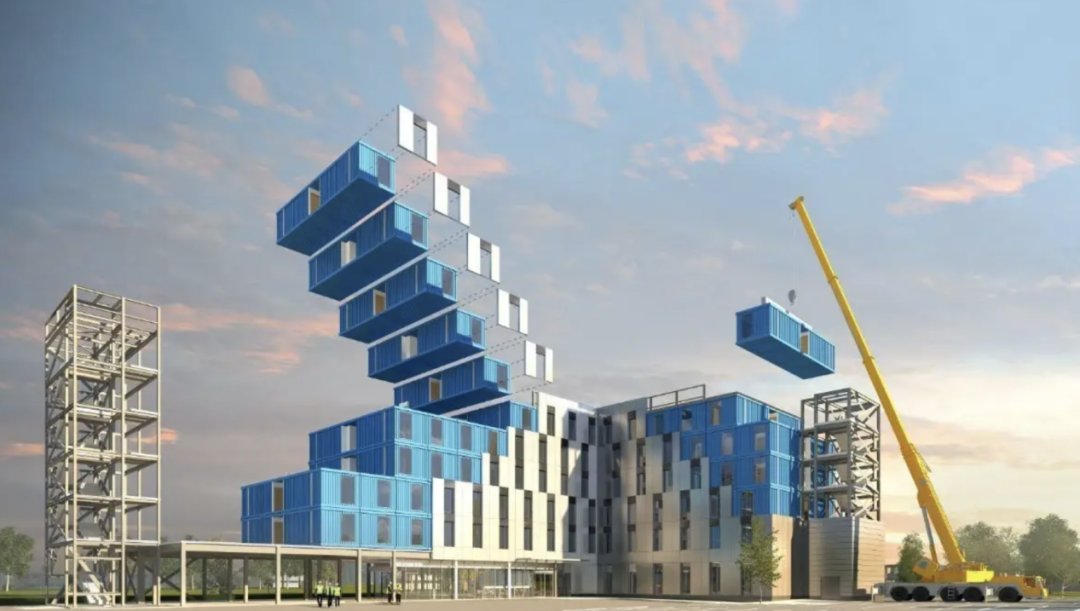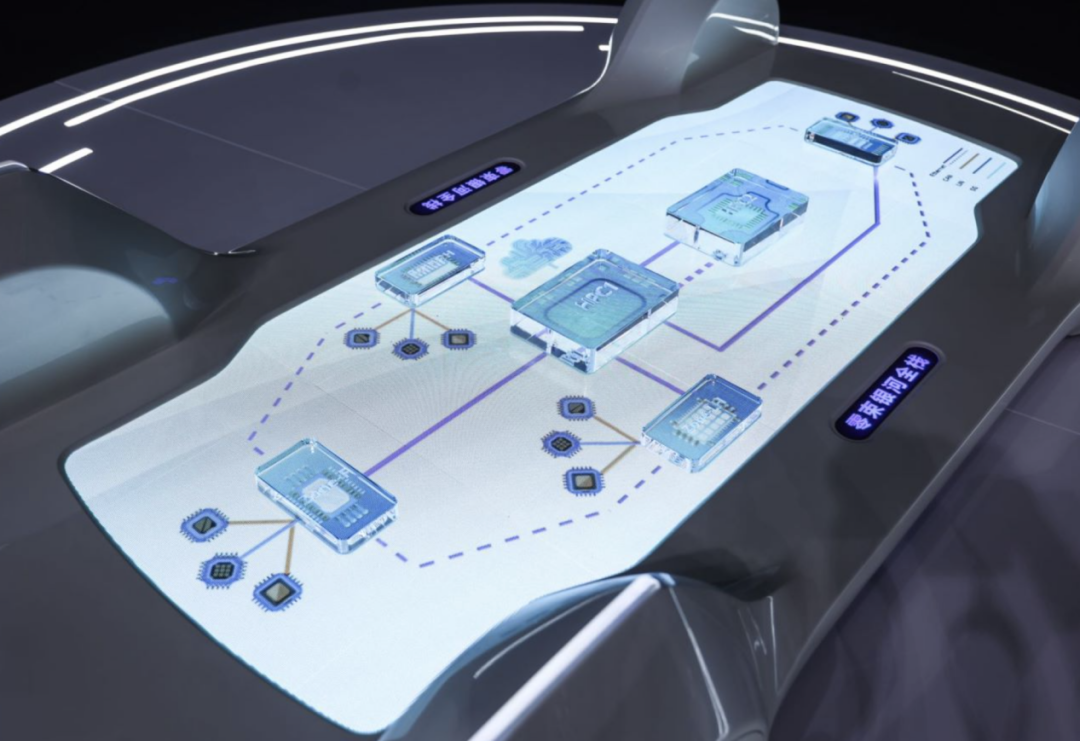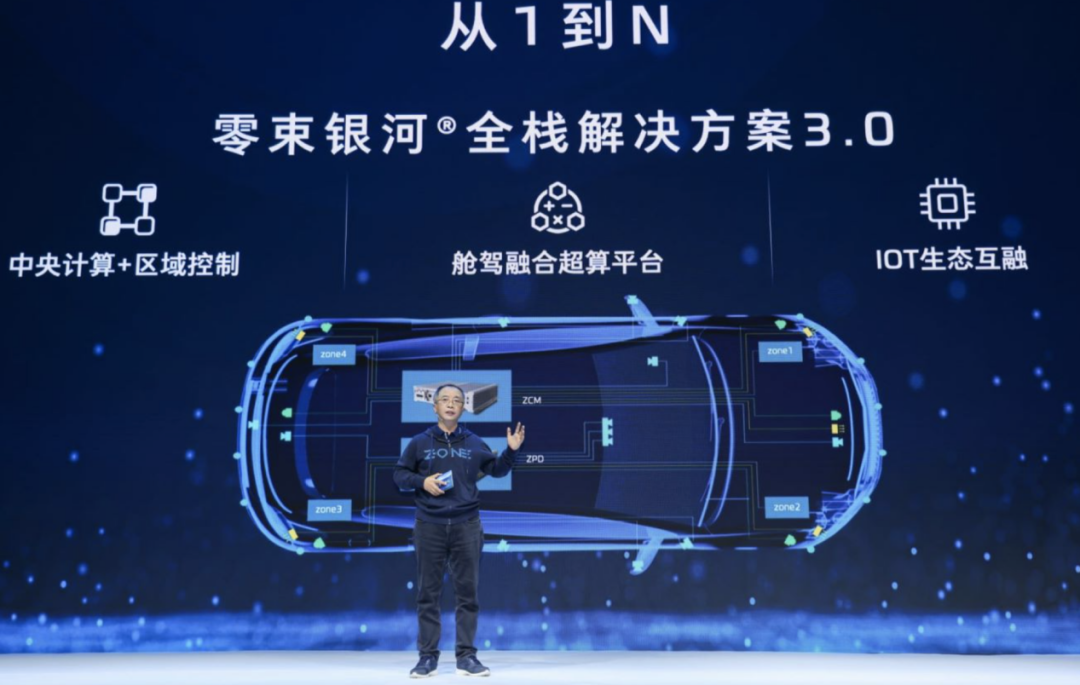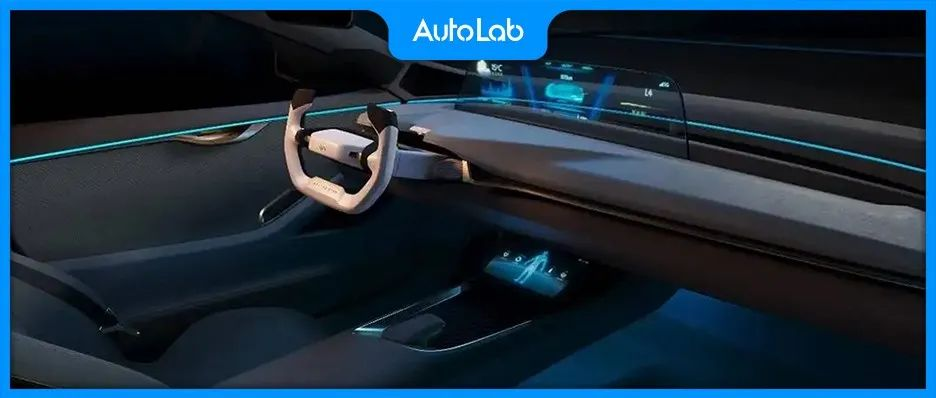Author: Zhang Xianglong
In the automotive industry, you may have heard of various types of modular vehicle platforms such as Volkswagen’s MEB, Toyota’s TNGA, and Geely’s CMA, which are also known as modular vehicle architectures.
The modular vehicle platform is a product of car companies striving to simplify car production, improve efficiency, and reduce costs. However, due to the standardization and universality of the components, different grades of vehicles born on the same platform have the same quality guarantee.

An inappropriate analogy is that the modular vehicle platform is like building with building blocks or following pre-fabricated materials to construct modular buildings like the one shown in the above image. By adjusting the wheelbase and combining different modules, different products can be created. But it is also a kind of “construction” concept itself.
Besides these modular vehicle platforms, there is also software architecture for intelligent vehicles.
Compared with the car platforms based on physical structures and hardware as a reference, the software platform architecture that cannot be seen or touched is often more puzzling. What is the software architecture of intelligent vehicles?
If the car platform is the building material itself, then the soul of the software platform architecture that enables the building to achieve intelligent functions.

Simply put, having several buildings does not necessarily mean having a CBD, but it is the operating system behind it, such as a commercial plan and property management, which activate it’s commercial service function, that makes CBD possible. This is also the role of software architecture for intelligent vehicles.
For example, a few days ago, SAIC-Zero-Stack launched the “Galaxy” Intelligent Automobile Full Stack Solution 3.0 at the SOA developer conference, which is a package that can turn an icy building into a real CBD through a back-end operation system such as a business plan and a property management.
The “Galaxy” Intelligent Automobile Full Stack Solution 3.0 includes:
-
Zero-Stack Galaxy® intelligent vehicle operating system ZOS
-
Zero-Stack Galaxy® intelligent driving computing platform ZPD- Zero Bundle Galaxy® Intelligent Cabin Computing Platform ZCM
-
Zero Bundle Galaxy® Cabin-Driving Fusion Computing Platform ZXD
The Zero Bundle Galaxy® Intelligent Vehicle Operating System ZOS can be regarded as the unified basic organizational infrastructure of the intelligent vehicle “CBD”, which enables the smooth coordination of software and hardware and runs smoothly.

Technically speaking, on the Zero Bundle Galaxy® Intelligent Vehicle Operating System ZOS, “downward” can coordinate domestic chips to achieve “software-hardware coordination”, “upward” provides standardized and unified interfaces to achieve “software-software decoupling”. It provides users with a unified development platform with cross-domain integration and widely supports deployment in multiple development environments such as X86, ARM, etc.
In other words, no matter what its previous experience, specialty, and personality were, it can adapt to its strengths and play its value in this organizational structure of ZOS.
The role of the Zero Bundle Galaxy® Intelligent Driving Computing Platform ZPD and the Zero Bundle Galaxy® Intelligent Cabin Computing Platform ZCM is similar to that of the ZOS, but the goals are more refined and combined with corresponding hardware attributes.
For example, ZCM can integrate HUD, AVM (panoramic imaging system), DVR (driving recorder), streaming media rearview mirrors, and many other traditional peripheral functions into the intelligent cabin.

The Cabin-Driving Fusion Computing Platform ZXD is equivalent to a secondary command organization under ZOS, mainly for cross-domain deep integration of the intelligent cabin and intelligent driving. By pre-installing the intelligent vehicle operating system, similar to installing windows on a computer, ZXD pre-installs the intelligent vehicle operating system ZOS, which can reduce the difficulty of developing intelligent vehicle software and algorithms.
In addition to the “Galaxy” intelligent vehicle full-stack solution 3.0, SAIC also brought the Zero Bundle SOA Developer Platform.
If the “Galaxy” Intelligent Vehicle Full-stack Solution 3.0 is a solution to make buildings CBD, then the SOA Developer Platform is more like a start-up park.The bottom-level SOA software platform middleware can be likened to the infrastructure of a startup park. Similarly, the basic middleware is like the road networks and bridges in a startup park, while the functional middleware is like water, electricity, and gas.
On top of this is the SOA developer platform, which is akin to a business incubator in a startup park, housing one startup team after another. The top layer is the digital mall, a unified commercialized external interface housed within the park, representing the last mile of SOA commercialization.
In the past year, SAIC has built the first product layer of the new SOA infrastructure, which is the basic software architecture middleware used in mass-produced cars with centralized electronic architectures. They serve as the “arteries” of the startup park, connecting different regions and facilitating real-time communication and scheduling of various functions, such as intelligent cabins and intelligent driving.
However, road networks and bridges are not enough for the survival of a startup park; water, electricity, and gas are the basic conditions. Therefore, based on “SOA infrastructure,” SAIC Lingbu has built the second product layer of the new SOA infrastructure over the past year, including standardized SOA service modules for vehicle control, intelligent driving, information entertainment, and intelligent network connectivity. These modules, similar to the maps, voice, and “360 welcome parking” functions that we commonly use in our daily driving, are all implemented using SOA services.
The significance of this SOA software development platform lies in its effort to co-create an ecology. Any developer can use it to develop and test applications and become part of this startup park, with channels to commercialization.
Prior to this, SAIC and OPPO also announced that they would work together to build a broadly compatible ecological domain underlying protocol, which is expected to break down the barriers between mobile and vehicle systems. For example, car owners can update and maintain software content on their cars using their phones at home. Users can carry their phones into cars and connect seamlessly, achieving integration of hardware, software, and services on both devices.
The universal technology standards that are open to all brands will enable more car, mobile phone, and intelligent device manufacturers to connect and allow devices to call each other.
For example, unlocking a car with a smartwatch, displaying navigation information on smart eyewear, using a mobile phone as a handle to play games on a large screen, etc. Imagine these scenarios, it’s still very attractive.
Similar to SAIC’s RisingAuto, this announcement also reveals more than 100 eco-friendly collaborative products with partners on the SOA developer platform. It sounds like a heroic feeling of having all the talented people in one place.
However, different car companies have different considerations based on their own interests. Can they set aside technical barriers to cooperate in an open “ecosystem”?
In any case, this collaborative model of the scene will bring us changes in our future car life, which is currently worth looking forward to.
This article is a translation by ChatGPT of a Chinese report from 42HOW. If you have any questions about it, please email bd@42how.com.
